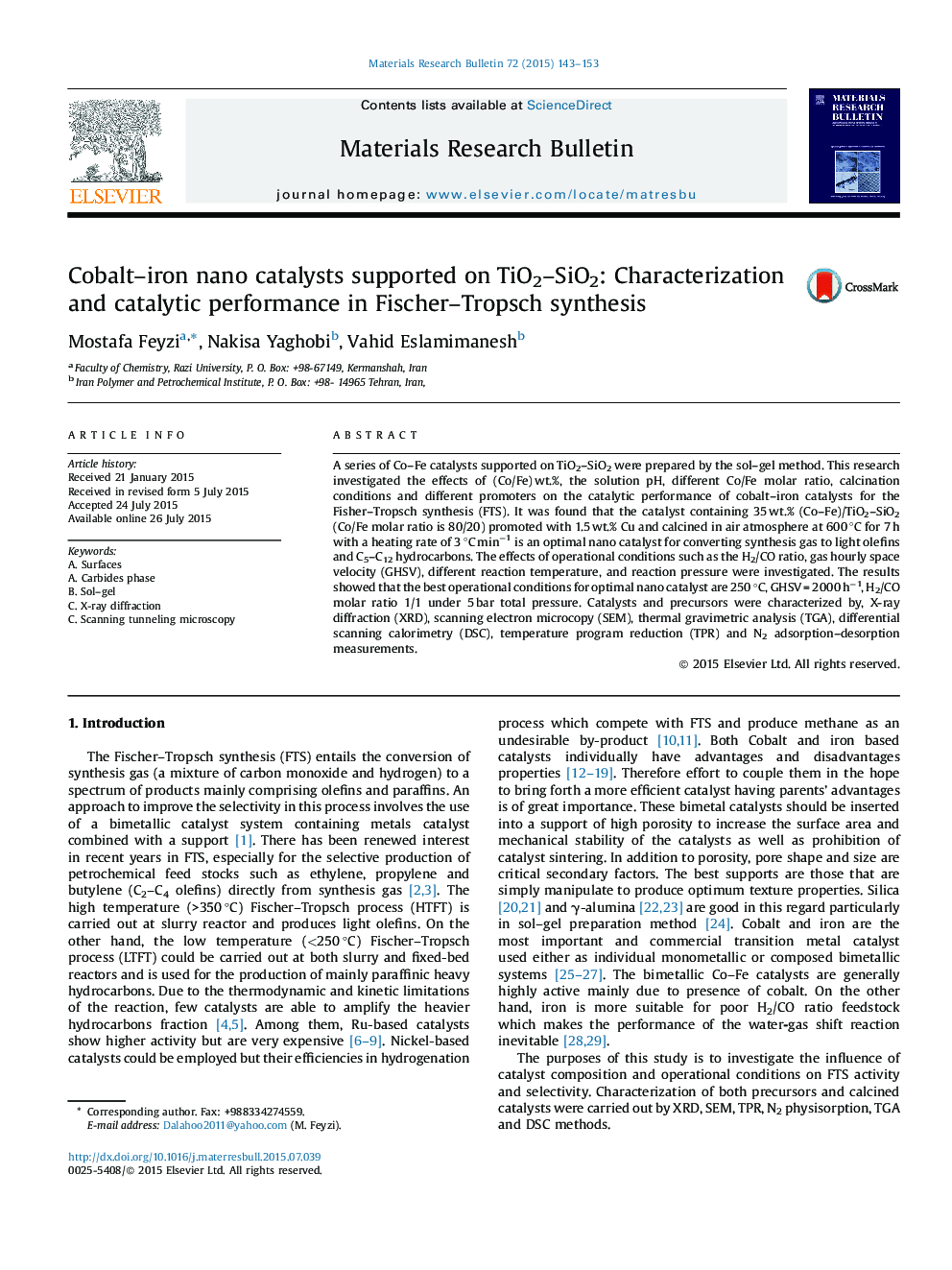| کد مقاله | کد نشریه | سال انتشار | مقاله انگلیسی | نسخه تمام متن |
|---|---|---|---|---|
| 1487524 | 1510703 | 2015 | 11 صفحه PDF | دانلود رایگان |

• The TiO2–SiO2 supported cobalt–iron catalysts were prepared via sol–gel method.
• The best operational conditions were 250 °C, GHSV = 2000 h−1, H2/CO = 1/1 and 5 bar.
• The (Co/Fe)/TiO2–SiO2 is efficient catalyst for light olefins and C5–C12 production.
A series of Co–Fe catalysts supported on TiO2–SiO2 were prepared by the sol–gel method. This research investigated the effects of (Co/Fe) wt.%, the solution pH, different Co/Fe molar ratio, calcination conditions and different promoters on the catalytic performance of cobalt–iron catalysts for the Fisher–Tropsch synthesis (FTS). It was found that the catalyst containing 35 wt.% (Co–Fe)/TiO2–SiO2 (Co/Fe molar ratio is 80/20) promoted with 1.5 wt.% Cu and calcined in air atmosphere at 600 °C for 7 h with a heating rate of 3 °C min−1 is an optimal nano catalyst for converting synthesis gas to light olefins and C5–C12 hydrocarbons. The effects of operational conditions such as the H2/CO ratio, gas hourly space velocity (GHSV), different reaction temperature, and reaction pressure were investigated. The results showed that the best operational conditions for optimal nano catalyst are 250 °C, GHSV = 2000 h−1, H2/CO molar ratio 1/1 under 5 bar total pressure. Catalysts and precursors were characterized by, X-ray diffraction (XRD), scanning electron microcopy (SEM), thermal gravimetric analysis (TGA), differential scanning calorimetry (DSC), temperature program reduction (TPR) and N2 adsorption–desorption measurements.
The Co–Fe/TiO2–SiO2 catalysts were prepared. The prepared catalysts were tested for light olefins and C5–C12 production. The best operational conditions are 250 °C, H2/CO = 1/1 under 5 bar pressure.Figure optionsDownload as PowerPoint slide
Journal: Materials Research Bulletin - Volume 72, December 2015, Pages 143–153